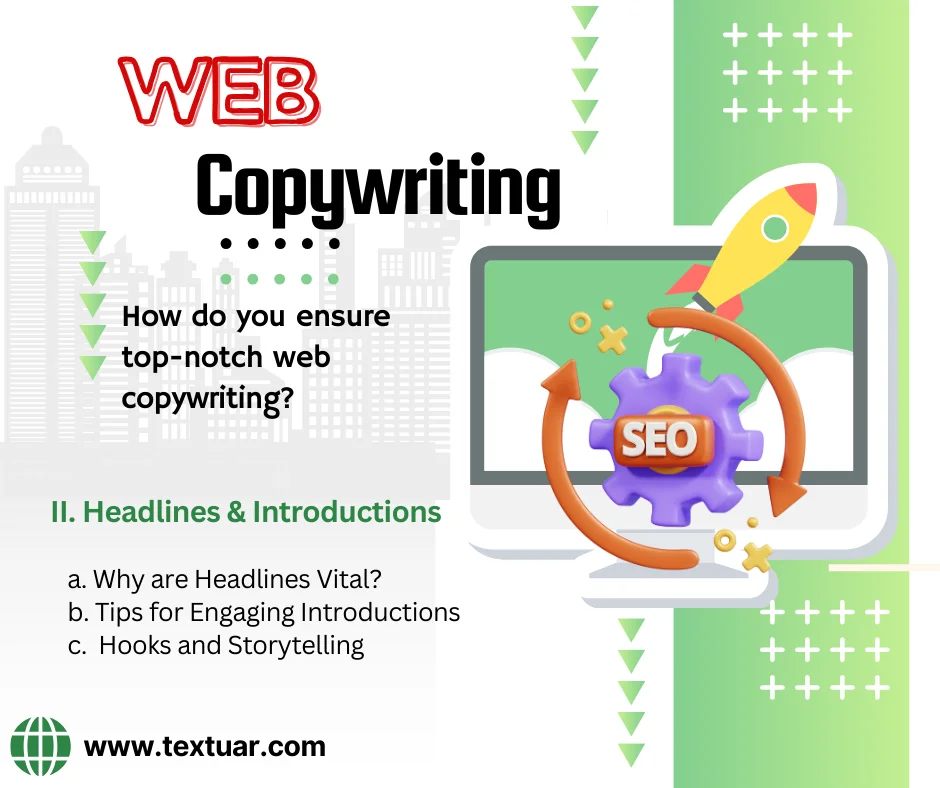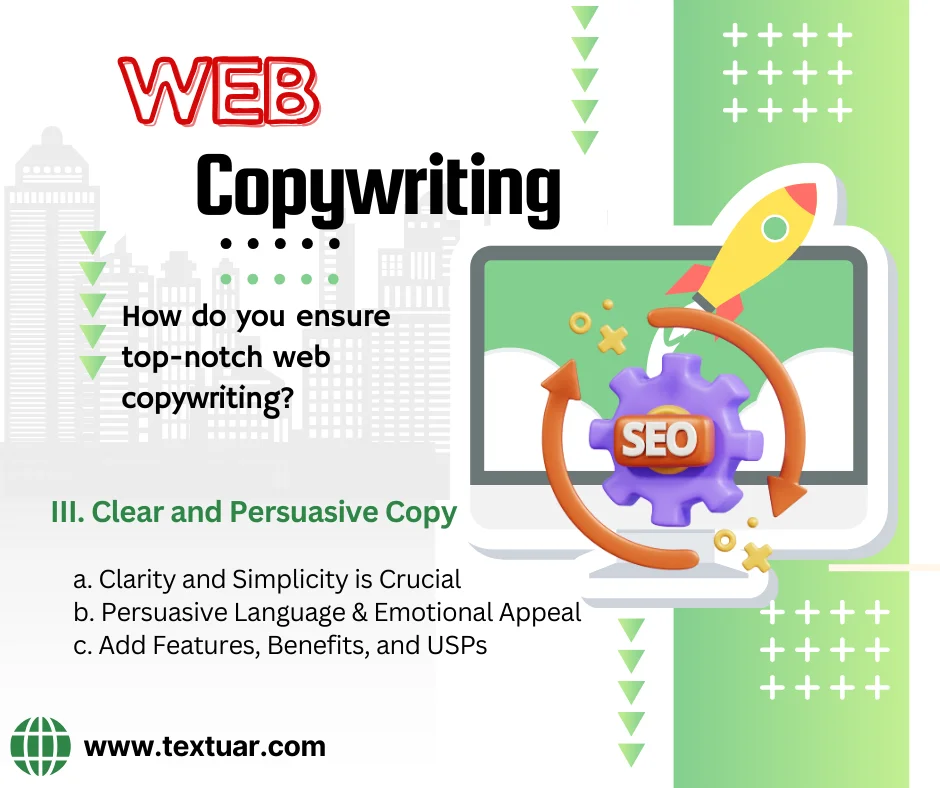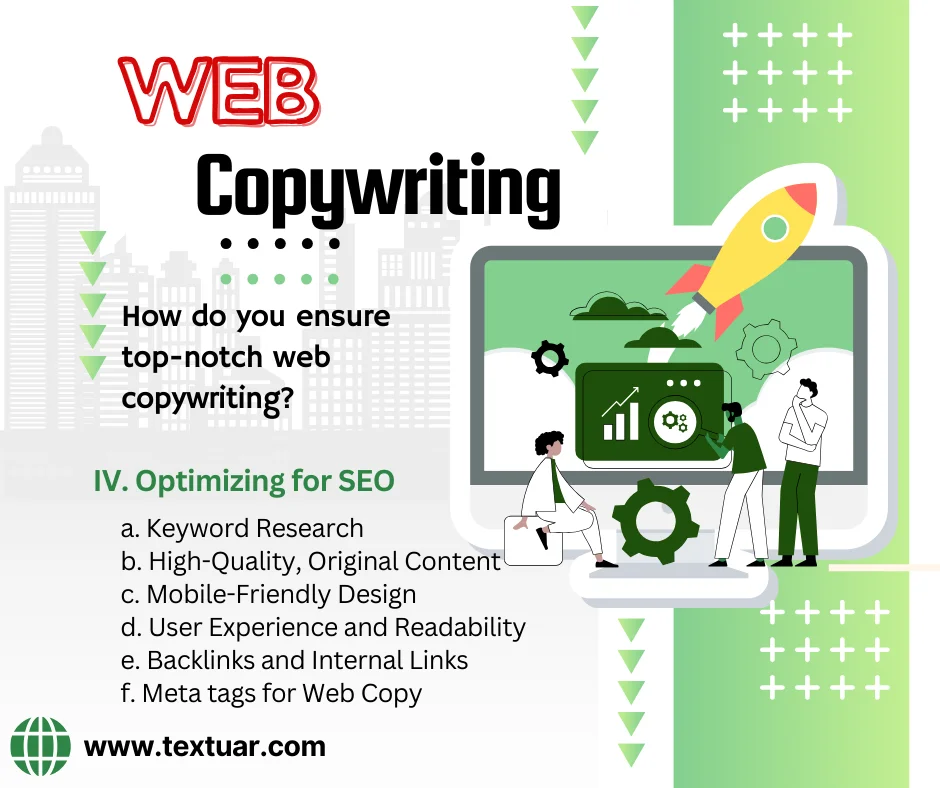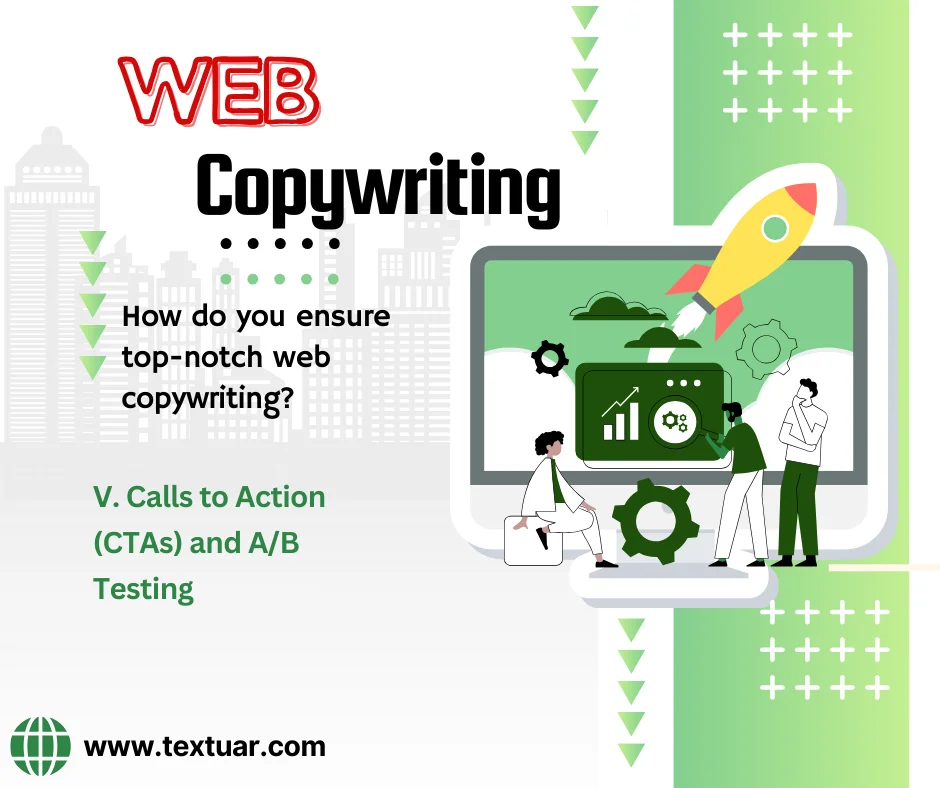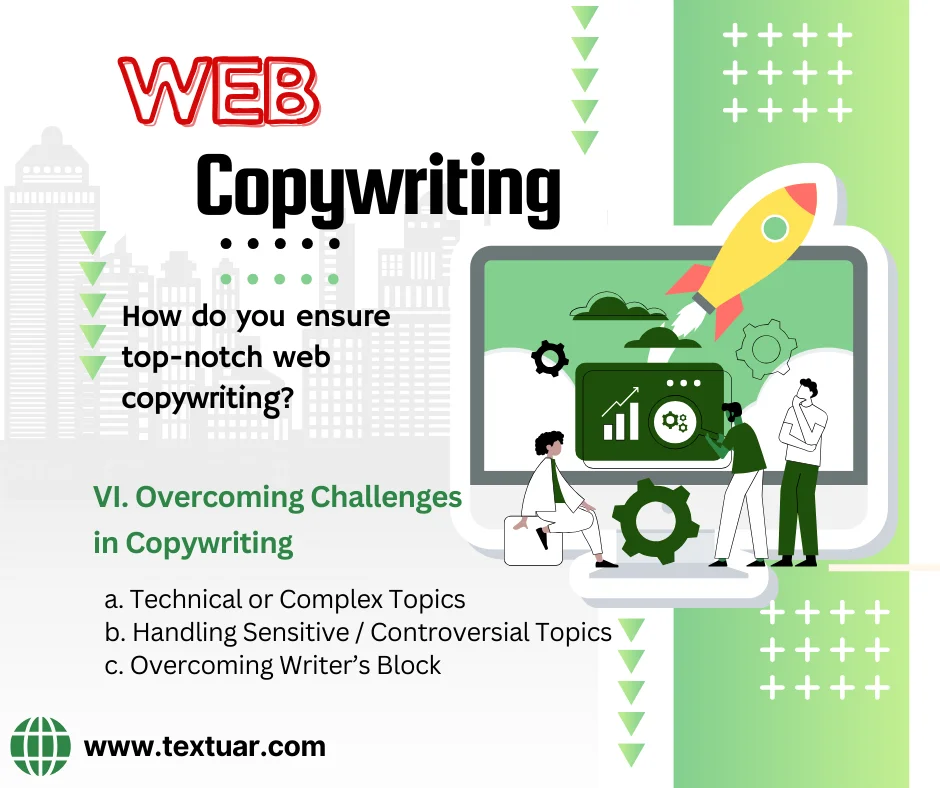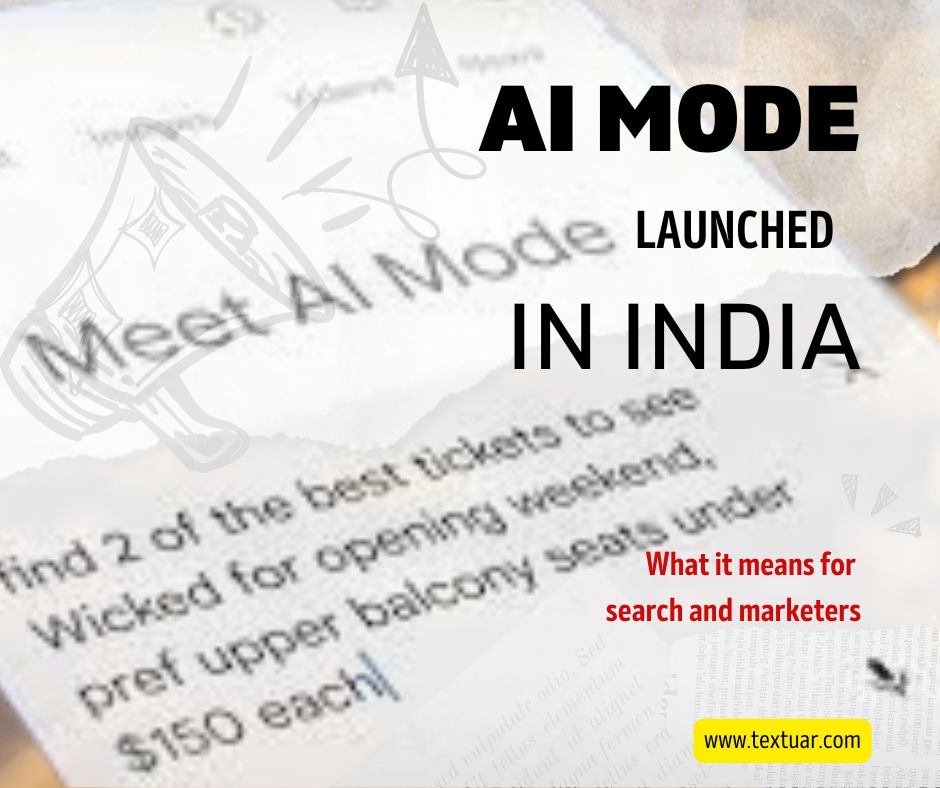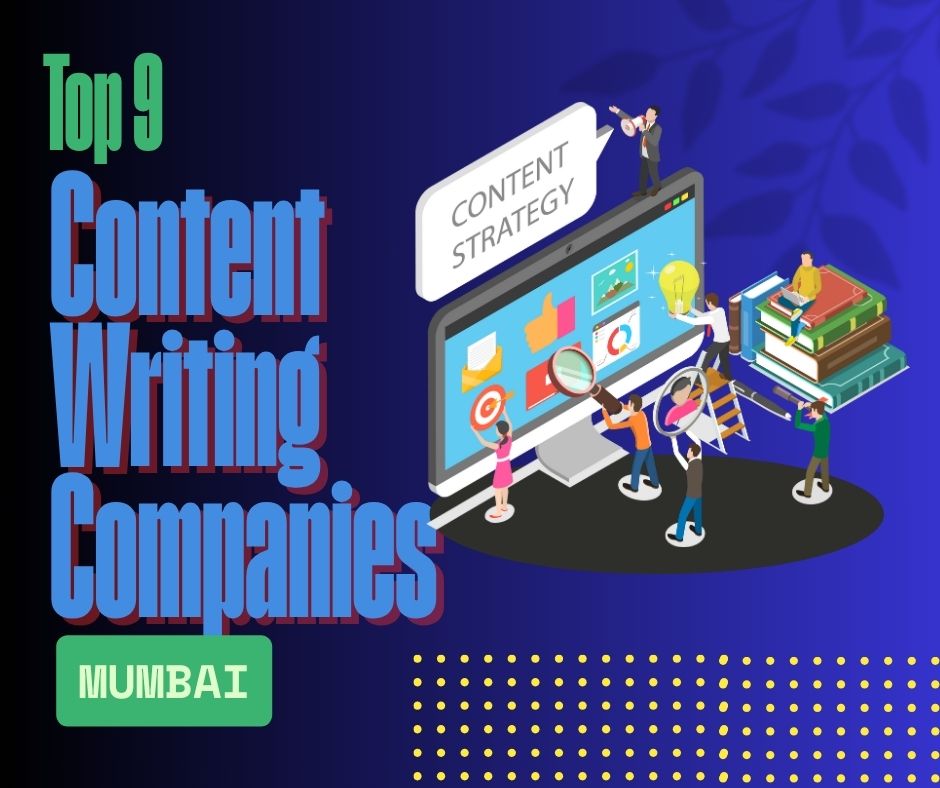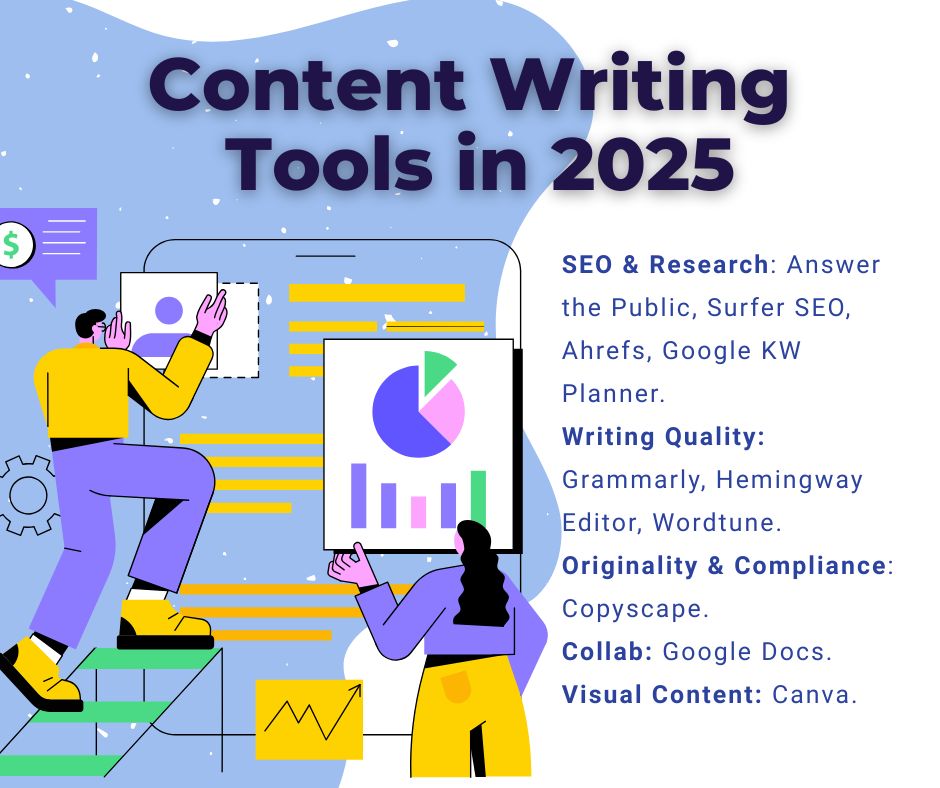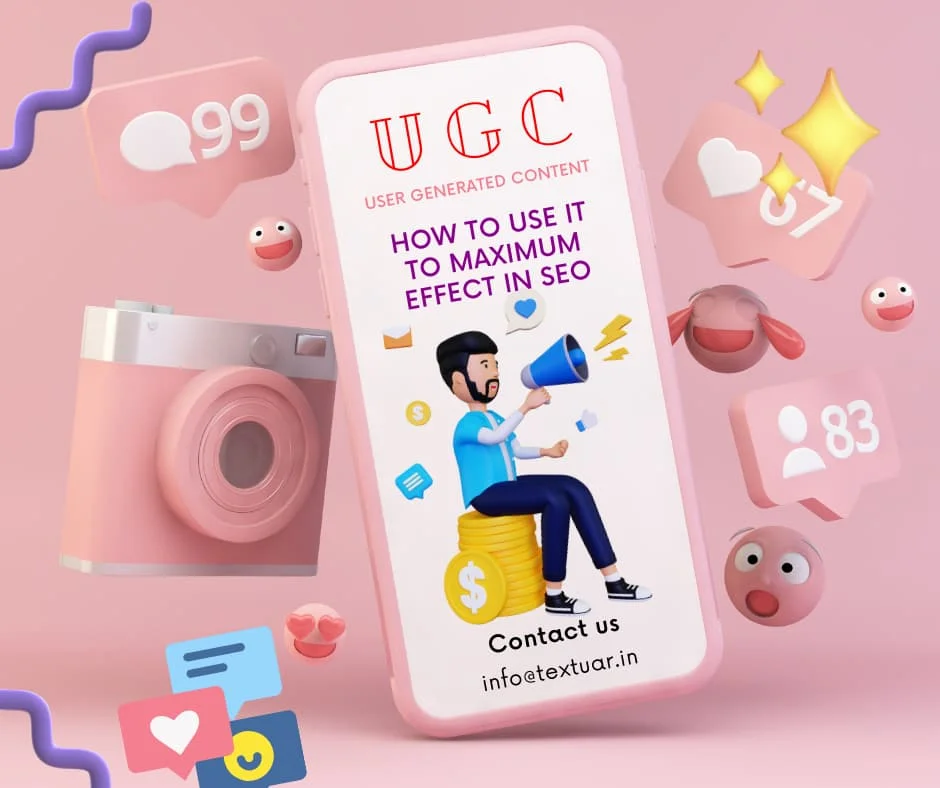The online space needs a lot of quality and helpful content to make a mark in the target reader’s mind. This is where web copywriting comes to the fore.
Today, the digital consumers’ attention spans are fleeting. As such, compelling copy stands as the cornerstone of effective communication. Every click, every purchase, and every moment of engagement is driven by carefully crafted words. Such words empower websites, social media posts, and online advertisements.
Businesses and marketers alike are increasingly taking cognizance of the powerful impact of smart copywriting.
Today, we will take a look at everything there is to know about web copywriting.
What is Web Copywriting?
Copywriting is the skilled art employed by professional copywriters. They keep readers hooked to the content. This way, they nudge them to act on the call to action button on the webpage.
Even Wikipedia says that copywriting is mainly done to create a sales copy. It seeks to prod a person to take a specific action.
It can take on various forms like the below:
- Web content
- Social media posts
- Mails for email marketing
- Product descriptions
How is web copywriting different from content writing?
- Content writing experts develop content that seeks to educate and inform. Copywriting does these AND persuades readers to buy from the brand. The sales-persuasive nature of copywriting makes it a difficult task best left to skilled copywriters.
- Content writing examples include blogs, articles, and press releases. Copywriting comes in handy in webpage content, social media posts, FAQs, and product descriptions.
- Content writing is much easier to create than copywriting. This is because of the lack of persuasive element needed in copywriting.
- Content writing focuses on clarity and creativity in talking about a certain topic. Copywriting tugs at the readers’ hearts to evoke emotions. This helps in driving successful buying decisions.
- Unlike copywriting, content writing may or may not have a call to action at the end of the content. Copywriting will always have a call to action at the end.
What are some examples of effective web copywriting?
I had the experience of developing web copywriting for various industries and web pages. Here is a gist of some good examples to help understand web copywriting.
Here are examples of effective copywriting for various web pages scenarios
- Homepage
Before – “Welcome to our website. We sell high-quality shoes.”
After – “Step into style! Discover our exclusive range of premium shoes, meticulously crafted for comfort and elegance. Your journey to unparalleled footwear fashion begins here.”
- Product Description
Before – “This phone has a great camera.”
After – “Capture moments in exquisite detail with our revolutionary phone camera. From breathtaking landscapes to intimate portraits, experience photography like never before.”
- Email Marketing
Before – “Our sale is on! Shop now.”
After – “Exclusive Offer Inside! Dive into our limited-time sale. Uncover unbeatable deals on your favorite products. Hurry, these savings won’t last long!”
- Blog Post
Before – “How to Stay Healthy.”
After – “Unlock Your Wellness Journey Proven Tips for a Healthier You. Dive into our comprehensive guide. You can explore everything from nutritious recipes to invigorating fitness routines.”
- Call to Action (CTA)
Before – “Submit”
After – “Claim Your Free Trial! Click Here to Transform Your Experience”
- Social Media Post
Before – “We have new arrivals in our store.”
After – “Unveiling the Latest Trends! Elevate your style with our fresh arrivals. Explore the season’s hottest fashion picks now.”
- About Us Page
Before – “We are a company that values our customers.”
After – “Who We Are A Passionate Community Dedicated to Elevating Your Experience. Discover the heart behind our brand and the commitment that drives us.”
- FAQ Section
Before – “What is your return policy?”
After – “Returns Made Easy Need to make a return? No worries! Our hassle-free return policy ensures your satisfaction. Visit our Returns & Exchanges page for a seamless process.”
- Testimonials
Before – “Great service!”
After – “Exceptional Experience! The service here exceeded my expectations. From the knowledgeable staff to the top-notch products, I am a customer for life.”
- Product Page
Before – “This watch has a leather strap.”
After – “Indulge in Luxury Our exquisite watch, adorned with a genuine leather strap, elevates your style. Experience the fusion of craftsmanship and elegance.”
Now, we will move to an interesting section. We will check some ways in which you can amplify the impact of web copywriting.
How do you ensure top-notch web copywriting?
Let us look at some tips that will help you in writing impactful copywriting for website
I. Understand Your Audience Better
a. Conduct Audience Research and Analysis
Understanding your audience is the bedrock of impactful copywriting. You can do this by analyzing demographics, preferences, and behaviors. These steps help you to tailor your content precisely.
Effective audience research delves deep into the consumer psyche. This way, a copywriter uncovers not just what they buy, but also why they buy. You can get a holistic picture via surveys, social media analytics, and market research.
Surveys offer direct insights. Social media metrics unveil social trends. You need to triangulate these diverse yet connected data sources. This helps you gain a nuanced understanding vital for crafting content that truly resonates.
b. Creating Buyer Personas for Targeted Web Copywriting
Buyer personas elevate audience understanding from statistical insights to relatable characters. They breathe life into data. Thus, it enables empathetic communication. Creating personas isn’t mere segmentation. Rather, it is the art of humanization, turning abstract data into relatable individuals.
Personas are your narrative anchors. They represent diverse segments within your audience. They embody dreams, fears, and aspirations. This way, you get to personify your ideal customers via well-defined personas.
Empathy is your guide here. It lets you step into their shoes and see the world through their eyes. As a copywriter, you understand their daily challenges and aspirations. This helps you craft content that becomes a solution, a friend, and a guide.
c. Understanding User Intent and Behavior
User intent is the compass guiding your content’s purpose. Understanding why users search unveils the map to your content kingdom. Is it informational, transactional, or navigational? User behavior patterns are the stars that guide your journey, illuminating the path your audience treads.
Transactional intent seeks action. Navigational intent needs directions. On the other hand, people with informational intent crave knowledge. By deciphering these intents, your content becomes a beacon. Analyzing user behavior, like bounce rates and dwell time, is helpful. It reveals the effectiveness of your content’s magnetic pull.
Behavior analysis is akin to deciphering a complex code. High bounce rates might signal disinterest. On the other hand, prolonged dwell time suggests engagement. Your content will evolve significantly with this knowledge.
II. Crafting Compelling Headlines and Introductions
Amazing headlines and introductions make the content sticky. It encourages readers to stay longer. They are more likely to consume the full content and act on the call to action with the below tips.
Why are Attention-Grabbing Headlines Vital?
Headlines act as gatekeepers for well-written web content. They must be magnetic. A copywriter will draw readers in effortlessly with great headlines.
You can think of a well-crafted headline as a promise, a teaser, and a glimpse into the content’s soul. It commands attention and urges readers to go reading further further.
Here are some tips to write captivating headlines.
What Tips Help in Writing Engaging Introductions?
Introductions are the first chapter of your content story. They should be irresistible, urging readers to venture deeper.
You can add thought-provoking questions to make the introductions memorable. Also, make sure to introduce the brand in the first few lines so that the readers know about the connection.
The key lies in anticipation when you craft introductions. They hint at the treasure trove of knowledge awaiting readers. They provide a sneak peek, leaving just enough unsaid to pique interest.
Why Use Hooks and Storytelling to Captivate Readers?
Hooks and storytelling are the heartbeats of engaging web copywriting. A hook is the bait in the introduction. It is a tantalizing glimpse of what’s to come. It could be a surprising fact, a bold statement, or a compelling quote. In web content, a hook tells the readers what makes a brand stand apart from the others.
Then, we have storytelling. This fine technique weaves a tapestry of relatable narratives. A copywriter will use it to draw readers into a world they can connect with emotionally. Such humanizing of content will keep the readers engaged for long on the copy.
III. Writing Clear and Persuasive Copy
Clarity in copywriting serves as the beacon that guides readers through the labyrinth of information. It ensures that the intended message is not lost in a fog of complex words or convoluted sentences.
Clear copy illuminates the essence of ideas. This makes the content easily understandable and relatable. As a result, readers can swiftly grasp the core message without ambiguity.
Such clarity also bolsters trust by being straightforward and honest. Here is how you can make the reader’s journey smoother with clarity in web content writing
a. Clarity and Simplicity in Web Copy
Clarity is the cornerstone of effective communication. You can consider crafting sentences that flow seamlessly. This way, every word in copywriting serves a purpose. Make sure to avoid jargon. Instead, you can opt for simplicity. Clear copy eliminates confusion, guiding readers effortlessly.
b. Persuasive Language and Emotional Appeal
Persuasion is an art in copywriting. You need to employ persuasive language that resonates emotionally. Your content should appeal to desires, fears, and aspirations in order to make an impact.
Similarly, you can use emotional connection to evoke action. Persuasion is a delicate dance, inviting readers to embrace your perspective willingly. Make sure that your content doesn’t look like a direct order. Instead, web copywriting should seamlessly guide the reader toward action.
c. Add Features, Benefits, and Unique Selling Propositions (USPs)
Mentioning features in copywriting would merely scratch the surface. But benefits and USPs delve deeper. Try to answer the below queries with USPs:
– What problems does it solve?
– How does it enhance lives?
– What value does it provide to customers?
You should communicate these benefits vividly.
IV. Optimizing for SEO
No matter how well-crafted your copywriting is, what’s the point if nobody will read it?
You need to optimize the web content for SEO for maximum visibility. This can happen only with the below optimization techniques.
a. Keyword Research and Integration
Thorough keyword research is the cornerstone of effective SEO. You should identify relevant keywords and phrases for your business. Your target audience is highly likely to use them in search queries.
Your website copywriting should integrate these keywords naturally within your content. Try including them in titles, headings, subheadings, and the body text. It will be a good idea to focus on long-tail keywords for specific, niche topics.
b. High-Quality, Original Content
Search engines prioritize high-quality, informative, and unique content. Take the time and effort to create valuable, original content. Such helpful content will provide solutions to users’ queries. Avoid duplicate content and plagiarism by using tools like Copyscape.
Engaging, well-researched content attracts readers. It also signals to search engines that your site offers valuable and helpful content.
c. Mobile-Friendly Design
Users are increasingly using mobile devices for making purchase decisions. Hence, having a mobile-friendly website is crucial for SEO. Ensure your website is responsive. This way, it adapts its layout and design to different screen sizes.
Google has recently switched to mobile-first indexing for search rankings. Hence, this point becomes highly vital for SEO success in web copywriting. You can consider optimizing images and multimedia elements for faster loading times on mobile devices.
d. User Experience and Readability
A positive user experience contributes to SEO. You can use clear headings, bullet points, and short paragraphs for easy readability.
You can make intuitive website navigation. This allows users to find information easily. A good user experience reduces bounce rates, indicating to search engines that your content is valuable.
e. Backlinks and Internal Links
Backlinks from reputable and relevant websites are vital SEO enablers. They signal to search engines that your web copywriting is trustworthy and authoritative.
Make sure to acquire high-quality backlinks to sites like Wikipedia. You can do guest posting, link-building, and creating shareable content to achieve this.
Additionally, use internal links to connect related pages within your website. In my experience, internal linking enhances user navigation. It also helps spread page authority throughout your site.
f. Meta tags for Web Copy
On-page SEO transforms your website into a search engine magnet. These include various elements like meta descriptions and title tags. Remember that each element plays a vital role.
Meta descriptions help lure visitors. They offer information about your webpage on the search results. As an outcome, users are compelled to redirect from search results to your website. Title tags are like signposts. They appear on search results above the meta descriptions. These titles guide both readers and search engines.
Make sure to add keywords to both tags. Also, they should be relevant and contextual.
V. Calls to Action (CTAs) and A/B Testing
a. Craft Compelling CTAs for Different Objectives
Crafting CTAs in web copywriting is an art. It combines persuasion and precision. You should begin with action verbs, directing users clearly.
Tailor CTAs based on specific objectives. They can be about making a purchase, subscribing, or sharing. It is a good idea to personalize CTAs to resonate with users’ needs. This way, your web copy will create a sense of urgency via words like “now,” “limited time,” or “exclusive.”
b. A/B Testing and Analyzing Conversion Rates
A/B testing is the compass guiding your optimization journey. It is essential to experiment with various CTAs, colors, placements, and wording.
Analyze conversion rates meticulously when you carry out these changes. You need to embrace what works and adapt accordingly. Think about transitioning from testing to implementation seamlessly. Your web copy can do this using data-driven insights to refine CTAs continuously.
VI. Overcoming challenges in website copywriting
Web copywriting needs amazing dedication to craft. Such extensive experience is never without its fair share of challenges. Do you want to know what the 3 common challenges to look for? Then read more here.
a. Dealing with Technical or Complex Topics
As a web copywriter, you need to navigate technical intricacies. For this, you need to focus on clarity and simplification. You can start by breaking down complex jargon.
You can enhance the level of understanding by resorting to analogies, comparisons, and relatable examples. Some copywriters also use visual aids and multimedia for better comprehension.
b. Addressing Sensitive Subjects and Controversial Topics
When it comes to potentially controversial topics, you need to approach web copywriting cautiously. Approaching such topics demands finesse and empathy. It’s about sensitivity, ensuring everyone feels heard.
You can overcome this issue by acknowledging diverse perspectives. Also, try to bring empathetic narratives into your web content. This way, your words become a bridge. It paves the way for respectful dialogue.
c. Overcoming Writer’s Block and Maintaining Consistency
It may happen that you keep staring at a blank page, unable to write anything. This is classic writer’s block. Conquering this problem needs patience and creativity. The first thing to do is step back. This will give you fresh perspectives after a small break.
You can also consider following The Pomodoro Technique. It is a time-management strategy that can boost concentration and productivity. Set a timer for 25 minutes. During this time, remain firmly committed to writing without interruptions.
To sum up
These were some interesting points about web copywriting. The tips outlined above will help you craft a great copy for the web. Towards the end, we looked at some challenges that can impact the copywriter’s work.
Looking at these challenges, it becomes amply clear that you need the expertise of a competent copywriting agency like Textuar. Our team has proven proficiencies in delivering content that helps propel engagement and conversion to the next level of success. Take the next step towards helpful content that will help your business thrive in the online space.
FAQ – Web Copywriting
1 – Who needs web copywriting?
Companies and individuals across various industries need quality copywriting for the web. Any business with an online presence needs a web copy. Whether it’s a small local business or a large multinational corporation, effective web copy helps a lot. It builds brand identity and promotes products or services. This helps in engaging potential customers.
2 – How to ensure the quality of web copywriting?
A copywriter will make sure of high-quality copywriting. This involves thorough research of the target audience. It also involves a comprehensive understanding of the brand’s voice and tone. They will also do rigorous editing and proofreading. This way, the final copy has impeccable grammar, spelling, and coherence.
3 – Why is it important to optimize content for SEO?
SEO-optimized content improves the efficacy of impactful content even further. A copywriter will consider keyword integration and high-quality content. The use of mobile-optimized pages and presence of authoritative backlinks further enhance the SEO-friendliness of the content.



